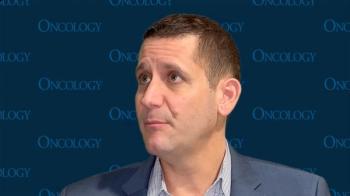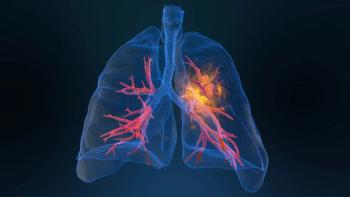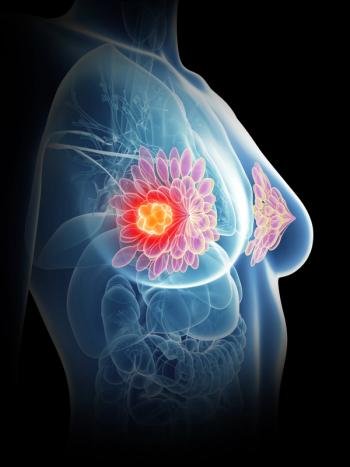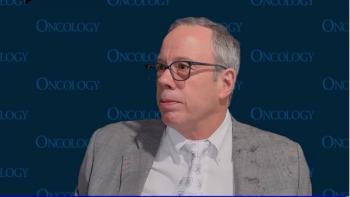
Clinical Trials Underestimate HRQOL Burden on R/R Myeloma Population
A retrospective systemic literature review showed that increased lines of therapy led to decreased HRQOL in patients with relapsed/refractory myeloma.
A systematic literature review (CRD42023467098) presented in a poster session at the
In patients with relapsed/refractory multiple myeloma compared with patients in the general population, global health status/QOL score was 60.0 vs 66.4, respectively (minimally important difference [MID] = 4). On the functional scales, scores were as follows: physical functioning, 71.6 vs 82.9, MID = 5; cognitive functioning, 82.9 vs 86.8, MID = 3; role functioning, 67.5 vs 83.6, MID = 6; and social functioning, 74.3 vs 88.4, MID = 5.
Regarding symptoms and single-item effects, scores were 15.7 for patients with multiple myeloma and 7.3 for patients in the general population for appetite loss (MID = 5); 37.6 and 26.0, respectively, for fatigue (MID = 5); 34.8 and 24.0 for pain (MID = 6); and 17.3 and 8.4 for financial difficulties (MID = 3).
“By quantifying pre-treatment HRQOL burden in both trial and [real-world environment] settings, our study provides a reference for contextualizing baseline patient burden as emerging therapies for [relapsed/refractory multiple myeloma] continue to evolve,” Rahul Banerjee, MD, assistant professor in the Division of Hematology and Oncology at the University of Washington, and assistant professor in the Clinical Research Division at the Fred Hutchinson Cancer Center, wrote in the poster. “The novel finding of a difference between the [real-world environment] and trial settings suggests that trials may underestimate [relapsed/refractory multiple myeloma]–associated HRQOL burden. As such, HRQOL improvements in clinical trials may be amplified in [real-world environment] settings, supporting the HRQOL end point as a powerful tool to assess the impact of novel therapies.”
HRQOL was assessed based on reported European Organization for Research and Treatment of Cancer (EORTC) on the 30-item Core Quality of Life Questionnaire (QLQ-C30) and 20-item EORTC Myeloma Module Quality of Life Questionnaire (QLQ-MY20) scores.
A total of 175 records from MEDLINE, Embase, CENTRAL, and hand searches that showed observational real-world evidence or clinical trials that reported outcomes pertaining to HRQOL in patients with relapsed/refractory multiple myeloma who were treated with any pharmacological intervention were included in the study. There were 34 unique studies with QLQ-C30 outcomes and 19 unique studies with QLQ-MY20 outcomes.
Per results from the QLQ-C30, there was also a statistically significant difference in 9 symptom items and domains when comparing real-world evidence with data gathered in clinical trials; 6 of these differences were also clinically meaningful.
Global health status scores, coming from 32 studies with a total of 9042 patients, demonstrated a -2.5 difference with real-world evidence vs in trials (95% CI, -4.5 to -0.5); role functioning, coming from 24 studies with a total of 6456 patients, demonstrated a -9.2 difference, respectively (95% CI, -13.1 to -5.4); emotional functioning, coming from 21 studies with 6284 patients, demonstrated a -3.0 difference (95% CI, -5.7 to -0.4); cognitive functioning, coming from 22 studies with 6362 patients, demonstrated a -3.7 difference (95% CI, -6.5 to -0.9); and social functioning, coming from 21 studies with 6213 patients, demonstrated a -5.6 difference (95% CI, -9.8 to -1.3).
Additionally, fatigue scores, from 28 trials with 7831 patients, demonstrated a difference of 6.5 between real world evidence vs trial design (95% CI, 4.3-8.8); nausea/vomiting scores, from 21 trials with 6336 patients, demonstrated a difference of 2.3, respectively (95% CI, 0.2-4.5); dyspnea, from 19 studies with 5958 patients, demonstrated a difference of 5.1 (95% CI, 1.6-8.6); and constipation, from 20 studies with 5949 patients, demonstrated a difference of 5.3 (95% CI, 2.2-8.4).
Regarding the QLQ-MY20 domains, the future perspective score difference for real world evidence vs clinical trials was -0.3 (95% CI, -4.2 to 3.6); the body image score difference was 2.4 (95% CI, 0.0-4.9); the disease symptoms difference was -3.2 (95% CI, -6.5 to 0.1); and the adverse effects of treatment difference was 1.8 (95% CI, 0.2-3.3).
The study investigators also noted that HRQOL burden increased with lines of treatment, and though it was only observed in 4 studies, it enforced the increase in burden held by patients in later lines of treatment.
Reference
Banerjee R, Hasegawa K, Itani T, et al. Health related quality of life (HRQoL) in relapsed/refractory multiple myeloma (RRMM): a systematic literature review (SLR) and meta-analysis. Blood. 2024;144(suppl 1):4721. doi.org/10.1182/blood-2024-203741
Newsletter
Stay up to date on recent advances in the multidisciplinary approach to cancer.

















































































